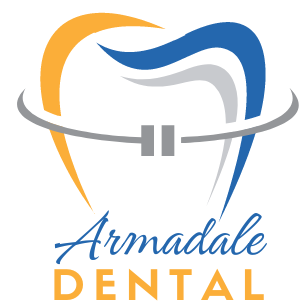Whitening strips are a popular and convenient way to brighten your smile. However, one common question that often arises is whether you should brush your teeth before applying them. The answer isn’t straightforward, as it depends on the type of whitening strips and your oral hygiene routine.
Why People Use Whitening Strips
Whitening strips are an affordable, accessible option for improving the appearance of teeth. They are designed to remove stains caused by food, drinks, tobacco, or aging, leaving your teeth several shades lighter.
Benefits of whitening strips include:
- Convenience: Easy to use at home without a dentist visit.
- Affordability: Less expensive than in-office whitening treatments.
- Effectiveness: Visible results in a short time when used correctly.
Should You Brush Your Teeth Before Using Whitening Strips?
1. Brushing Is Beneficial, but Timing Matters
Brushing your teeth before using whitening strips can help remove debris and plaque, allowing the strips to adhere more effectively. However, timing is crucial. Brushing immediately before applying strips may irritate the gums, especially if the bristles are hard or the toothpaste is abrasive.
2. Follow Product Instructions
Most whitening strip packages include specific instructions about whether brushing is recommended beforehand. Always follow the manufacturer’s guidelines to avoid adverse effects and achieve the best results.
3. Avoid Excessive Brushing
If you brush too vigorously right before applying strips, you might cause gum sensitivity. Consider brushing gently with a soft-bristled toothbrush or waiting 20–30 minutes after brushing to apply the strips.
How to Use Whitening Strips Correctly
- Clean Your Teeth: Brush gently and rinse your mouth to remove food particles.
- Dry Your Teeth: Ensure your teeth are dry to help the strips adhere properly.
- Apply the Strips: Align the strips with your gumline, pressing them firmly for a snug fit.
- Wait for the Recommended Time: Leave the strips on as instructed, usually 15–30 minutes.
- Remove and Rinse: Remove the strips and rinse your mouth to eliminate any residue.
Tips for Best Results with Whitening Strips
- Brush and Floss Regularly: Maintain a consistent oral hygiene routine to support whitening results.
- Avoid Staining Foods and Drinks: Minimize coffee, tea, red wine, and tobacco use during the whitening process.
- Use Whitening Strips Sparingly: Overuse can lead to tooth sensitivity. Stick to the recommended frequency.
- Combine with Whitening Toothpaste: Use a whitening toothpaste to enhance and maintain your results.
- Consult Your Dentist: Discuss your whitening goals with your dentist, especially if you have sensitive teeth or dental restorations.
Pros and Cons of Whitening Strips
Pros
- Ease of Use: Simple application process.
- Affordability: Cost-effective compared to professional treatments.
- Convenience: Can be used anytime, anywhere.
Cons
- Sensitivity Risk: May cause temporary tooth or gum sensitivity.
- Uneven Whitening: Strips may not cover all surfaces, leading to uneven results.
- Not Effective on Restorations: They won’t whiten crowns, veneers, or fillings.
Common Mistakes to Avoid
- Skipping Brushing: Failing to clean your teeth can reduce the strips’ effectiveness.
- Brushing Too Hard: Aggressive brushing before applying strips can irritate gums.
- Leaving Strips on Too Long: Overuse can damage enamel and cause sensitivity.
- Using Expired Products: Always check the expiration date for optimal results.
- Inconsistent Application: Use strips as directed for the full course to achieve uniform whitening.
Safety Tips for Whitening Strips
- Patch Test: If you have sensitive teeth, try using the strips for a shorter time initially.
- Avoid Overlapping Treatments: Wait several months before repeating whitening treatments.
- Store Properly: Keep the strips in a cool, dry place to maintain their efficacy.
- Check for Irritation: Discontinue use if you experience severe discomfort or gum irritation.
Armadale Dental Clinic: Markham’s Top Choice for Emergency Dental Care
For those in Markham, Armadale Dental Clinic is one of the best options for emergency dental care. Located at 7720 Markham Road, Unit A4, Markham, ON L3S 3K1, Armadale Dental Clinic is known for its quick response and expert care in handling all types of dental emergencies. Whether you’re dealing with an unexpected dental issue or a recurring problem that needs urgent attention, the experienced team at Armadale Dental Clinic is here to help.
Contact Armadale Dental Clinic at +1-647-695-1779 or via email at info@armadaledental.ca to receive the emergency dental care you need. Their team is dedicated to providing immediate, high-quality treatment to alleviate pain and restore your oral health.
FAQs About Brushing Before Using Whitening Strips
1. Can I brush my teeth immediately before applying whitening strips?
It’s generally better to wait 20–30 minutes after brushing to avoid gum irritation, especially if you’ve used a toothpaste with abrasive particles.
2. Should I brush my teeth after removing whitening strips?
Yes, brushing your teeth after removing the strips can help clean off any leftover residue. Use a gentle toothpaste to avoid sensitivity.
3. What type of toothpaste should I use with whitening strips?
Choose a non-abrasive, fluoride toothpaste to protect your enamel and minimize sensitivity during the whitening process.
4. Can I floss before using whitening strips?
Yes, flossing before applying strips can help remove debris between teeth, ensuring even whitening. Be gentle to avoid gum irritation.
5. How often should I use whitening strips?
Follow the product’s instructions, which typically recommend daily use for a specific period, such as 7–14 days. Avoid overuse to prevent sensitivity.
Conclusion
Using whitening strips is an effective way to brighten your smile, but proper preparation is key to achieving optimal results. Brushing your teeth before applying strips helps remove debris and ensures better adhesion, but timing and technique are important to avoid gum irritation.
By following the product instructions, maintaining good oral hygiene, and consulting with your dentist, you can safely and effectively enhance your smile. With the right care, your brighter, whiter teeth will leave a lasting impression.
